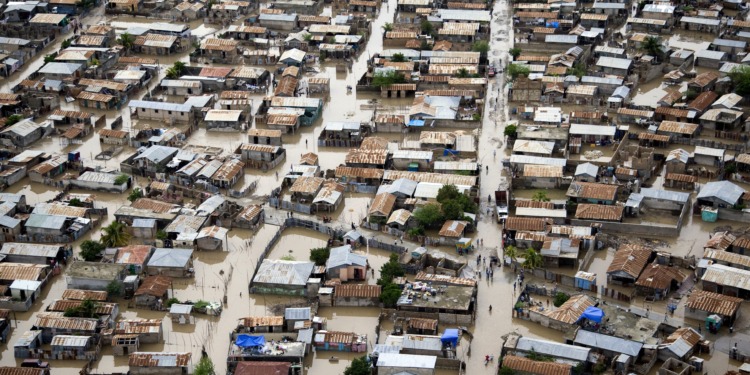The UN Environment Programme (UNEP) has issued its annual Adaptation Gap Report, which provides a science-based assessment of the global progress on adaptation planning, financing, and implementation. It finds that while implementation of adaptation actions is increasing, it is not keeping up with climate change impacts, and that international adaptation finance flows to developing countries are five to ten times below estimated needs.
Progress on climate adaptation so far has been too little, too slow. UNEP’s 2022 #AdaptationGap Report highlights the urgency to develop national adaptation plans to help the most vulnerable communities cope with the accelerating impacts of #ClimateChange. https://t.co/yyBKAm0RZN
— UN Environment Programme (@UNEP) November 3, 2022
Titled, “Too Little, Too Slow: Climate Adaptation Failure Puts World at Risk,” the report highlights mounting impacts “coming at only 1.1°C above pre-industrial temperatures,” for example a multiyear drought in the Horn of Africa, flooding in South Asia, and summer heatwaves across the Northern hemisphere.
According to UNEP’s Emissions Gap Report, countries’ nationally determined contributions (NDCs) under the Paris Agreement on climate change set the world on a path towards global warming of 2.4-2.6°C by the end of the century. Adaptation Gap Report 2022 therefore emphasizes that both mitigation and adaptation are key to help vulnerable countries and communities cope. It argues that the links between adaptation and mitigation actions need to be considered from the outset in planning, finance, and implementation, to enhance co-benefits.
The report notes that today, “[m]ore than eight out of ten countries have at least one national adaptation planning instrument,” and that these plans are “getting better and more inclusive,” with one-third of UNFCCC parties having incorporated quantified and time-bound targets. While financing to turn these plans into action is increasing, it finds significant acceleration is needed to double 2019 finance flows by 2025, in accordance with the Glasgow Climate Pact.
In 2020, international adaptation finance to developing countries reached USD 28.6 billion, representing a 4% increase from 2019. The report estimates annual adaptation needs to be between USD 160 billion and 340 billion by 2030 and USD 315 billion to 565 billion by 2050.
Related Articles: COP27 Watch: ‘Loss and Damage’ Pledges Grow to Over €240 Million | COP27: We’re Losing the Fight for Our Lives, Says António Guterres | Wind and Solar at COP27: Key Renewable Industries Leading the Energy Transition Together | UN Experts Demand Crackdown on Greenwashing of Net Zero Pledges
The report further finds that implementation of adaptation actions that are now concentrated in the agriculture, water, ecosystems, and cross-cutting sectors is too slow to keep up with climate impacts. It warns that without “a step change in support,” adaptation “could be outstripped by accelerating climate risks.”
Underscoring that the war in Ukraine, global supply shortages, and the COVID-19 pandemic cannot be allowed to derail international efforts to increase adaptation, the report calls for the Sharm El-Sheikh Climate Change Conference (UNFCCC COP 27) to “back the strong words in the Glasgow Climate Pact with strong action on adaptation, mitigation and loss and damage.”
Adaptation at heart of #COP27 – here's the reading:
@UNEP the Adaptation Gap Report
@UNDP Just Transition for Paris
@WWF Living Planet Report
@IPCC_CH 6th Assessment Report
@Amnesty Accounts of the Climate Crisis
@GCAdaptation State & Trends in Adaptation 2022
— Karolina (@KarolinaEklow) November 5, 2022
“We need a rapid acceleration in scientific research, innovative planning, adequate finance and implementation, and deeper international cooperation,” said UNEP Executive Director Inger Andersen at the report’s launch on 3 November 2022.
In a message, UN Secretary-General António Guterres called for a dramatic increase in the quantity and quality of financing for adaptation needs, a new business model for turning adaptation priorities into investable projects, and better climate risk data and information. Noting that in many places, it is too late for adaptation, he called for COP 27 to “provide a clear and time-bound roadmap on closing the finance gap for addressing loss and damage.”
Editor’s Note: The opinions expressed here by the authors are their own, not those of Impakter.com — In the Featured Photo: Hurricane Tomas Floods in Haiti. Featured Photo Credit: UN Photo/UNICEF/Marco Dormino.










